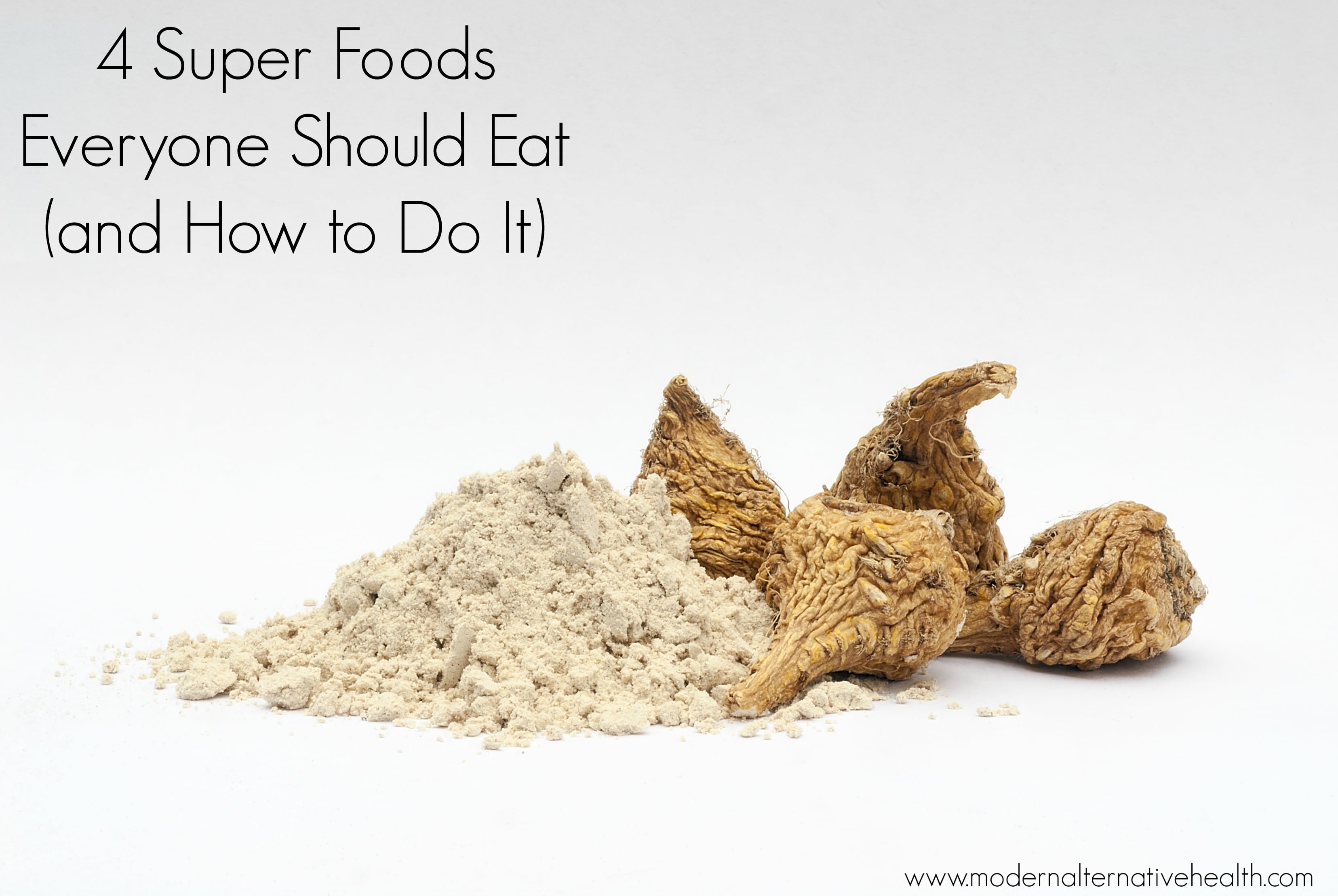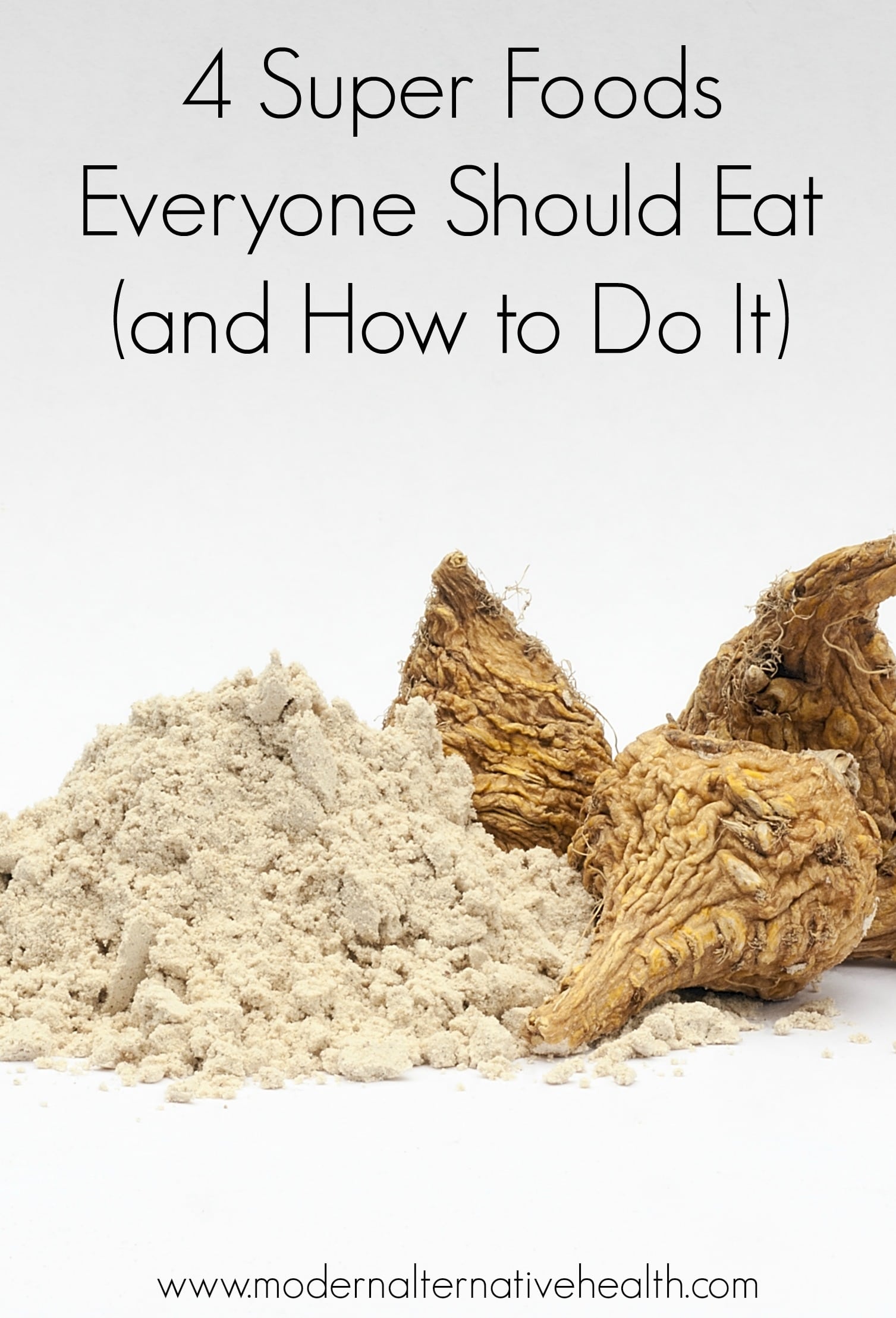
I have a small obsession with optimal health and nutrition.
When I sit down to make meal plans and a careful grocery list, it can take me days. My husband rolls his eyes — “How hard can this be? Just write down things we like to eat. 10 minutes, done.” But I have to think about what’s on sale, what’s in season, balancing different types of proteins, varying our produce…. It isn’t that simple! (That’s why we started Tradishen, by the way. We do the work for you.)
Then there are the supplements. Which are optimal? That is, which do we really need and which are unnecessary extras…. And, which are truly food-based and junk-free?
It’s enough to drive anyone insane, and occasionally I just want to give up. But most of the time, I love it. It’s a puzzle to “figure out” to improve my family’s health.
But not everyone has the time and inclination I do, to solve that puzzle. I get it. And I want to help.

4 Super Foods Everyone Should Eat (and How to Do It)
Most people are like, “Just tell me what to do.” I so get that. We can’t all be experts in everything, and we don’t have the time to fully read about and understand everything as in-depth as we’d like to.
Since I have my small obsession, I’m going to share a little bit about it with you today. We’re focusing on super food powders!
Super food powders, first, are high-quality, organic powders that are made from 100% whole foods. There are no fillers in them, and they’re single ingredient-powders (not mixed together with other foods). They’re chosen as super foods because they are super high in key nutrients, antioxidants, and other things that make them awesome for you.
Today we’re going to look at four of my favorite ones!
Maca
You may have heard about this one. It’s really popular in the health world right now, and is known for increasing fertility. It definitely does that, but that’s not all!
It also promotes hormone balance (including evening out estrogen levels in women, which can reduce PMS), protects the prostate in men, boosts the immune system, reduces recovery time after exercise, and reduces anxiety/promotes a healthy stress response.
Maca is an adaptogen, which means that it helps to gently balance the body.
It’s also rich in so many amazing nutrients, especially calcium, potassium, and phosphorus. Learn more about maca.
Tart Cherry
This one really excited me! I love cherries, to start, but it also has so many cool benefits.
Tart cherry is a powerful anti-inflammatory. But it doesn’t just reduce inflammation, it modulates it — that means that if your body needs it temporarily, it allows it; but it doesn’t let inflammation last too long or get out of control. It reduces low-level long-term inflammation. It promotes faster healing after exercise and better muscle repair.
It also helps to balance blood sugar, and promote a healthy body weight. It can help some people lose weight by reducing the inflammation that the fat cells produce.
Plus, tart cherries are high in tryptophan (an amino acid) and melatonin, meaning they help you relax and reduce stress levels, and can improve your sleep! Learn more about tart cherries.
Papaya
This is another awesome, tropical fruit. It’s known as a digestive enzyme, because it’s bittersweet — more sweet or more bitter, depending on whether or not it’s ripe.
Papaya has a lot of fiber and key nutrients that promote overall digestive health. It helps digest food better, and helps maintain a healthy colon, and even feed important probiotics.
Papaya also helps to balance hormones and reduce menstrual pain. And, it promotes healthy hair growth (which is important to some women postpartum!). Learn more about papayas.
Acerola Cherry
This is another type of cherry, and the main reason people use this is because of its crazy high vitamin C content! Vitamiin C is a powerful antioxidant, and helps to heal the body, reduce inflammation, and lots more. (And, it’s fully natural vitamin C with all the co-factors, not an isolate.)
Acerola also helps to promote healthy blood sugar, and to boost the immune system. Learn more about acerola.
How to Use Super Foods
Okay, so, now you know why these are awesome…but what do you do with them?
I personally use them in powdered form, because they’re easy to use and shelf-stable. You can purchase them in capsules or tablets, but I buy them as straight-up powders (they’re much more affordable that way, too).
Here’s where I buy them. (On sale through 5/6 only.)
Still…what do you do with the super food powders once you get them? Do you blend them? How do you take them?
A lot of people are interested in this, but confused. That’s why I’m going to help you. I promised I would, right? I’m not going to leave you hanging with a little information and no idea what to do next!
On Monday, May 23, I’m holding an online class. We’ll be gathering together, at our own computers throughout the country, at the same time, to learn what to do with these powders. You’ll have your powders, and any other supplies that you choose (more on that soon), and we will talk about exact nutritional profiles, and blend our own supplement together. You’ll be provided a recipe, additional facts about each ingredient, options on exactly how to use it, and have your questions answered immediately.
Sound awesome?
The best part is, the class is FREE, when you purchase your super food powders HERE. All you need is:
- 0.5 kg tart cherry powder
- 0.5 kg maca root powder
- 0.25 kg acerola powder
- 0.25 kg papaya powder
- 0.25 kg spirulina (that one’s optional)
Everyone who purchases their super food powders by May 6 will be sent a recipe, and a link to register for the class.
Also during this class, we’ll cover:
- How to blend a couple of other supplements
- How to encapsulate supplements
- An optimal supplement routine
- How to decide which powders/foods are the best ones for you
It’s everything you need to get started making your own affordable, super high-quality, truly whole-foods-based supplements.
Are you ready to join us? We’d love to have you!








[…] post 4 Super Foods Everyone Should Eat (and How to Do It) appeared first on Modern Alternative […]
Can Maca be taken while breastfeeding?
Hi Jenna! It is one of those “some say yes, some say use caution, and some say no” situations. Maca has shown indications that it can affect hormones, and that may have an effect on breastfeeding. However, as far as we know, there have not been any reported issues between maca and breastfeeding with the exception of a case where there was lead contamination due to the location the maca was grown. Maca safety, like many other foods, has not been thoroughly tested since there isn’t a lot of money in that sadly. Make sure you have a high quality source either way. While we cannot claim an answer, I can say that looking at the research and experiences, I would have no problem adding maca root to my regular diet. I avoid high doses naturally, and just try to add herbs and roots to what I am eating.